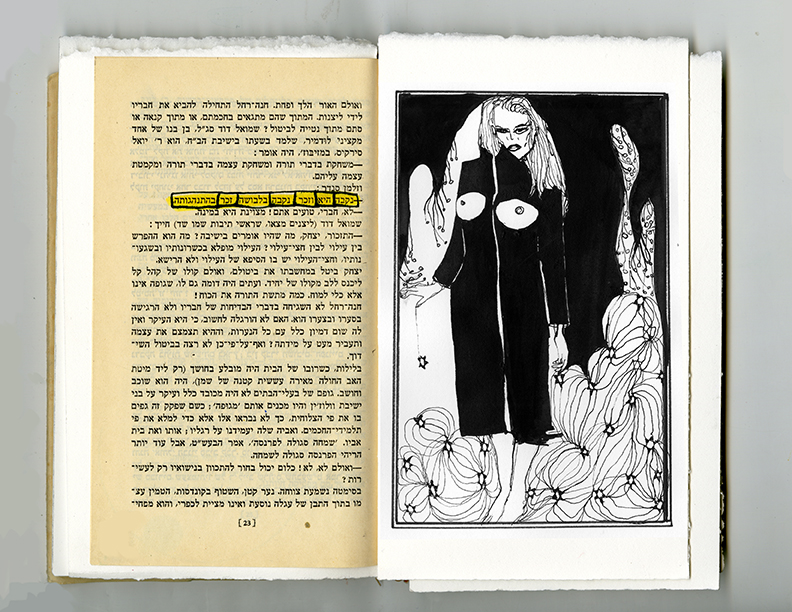


View the The Virgin of Ludmir (Annotated) e-book
From curator Ruti Direktor's text about the piece, included in the Haifa Museum exhibition The Chicago Triangle , Art - Women - Discourse:
Ofri Cnaani's work is concerned with the concept of female ecstasy, and the Maid of Ludmir is one of the figures she studies in this context. In the history of art, this subject is largely represented by images of Christian saints. The best-known examples are Saint Teresa and Blessed Ludovica, whose representation in Bernini's 17th-century sculptures fuses together spiritual devotion, sensuality, and sexuality. Cnaani attempts to extricate the Maid of Ludmir from the embrace she has received in recent years from movements devoted to promoting the status of women in the Jewish world, and to represent a darker, more folkloric and eccentric character.
The Maid of Ludmir - Hannah Rachel Verbermacher
1805, Ludmir, Ukraine- 1888, Jerusalem
The derisive name "The Maid of Ludmir" was given to Hannah Rachel Verbermacher by her opponents, who could not tolerate the idea of a woman serving as the leader of a Hasidic community. Hannah Rachel Verbermacher was born in the town of Ludmir, in the Ukraine, where she studied the Jewish religious texts. She eventually turned her home into a center for prayer and learning, gave lessons, and received Hasidic followers who came to her with questions and requests. There are different hypotheses concerning her possible engagement or marriage and the reasons for their cancellation. What is known for certain is that she arrived in Palestine ca. 1860 on her own, when she was in her fifties. She settled in Jerusalem and continued to serve as the leader of a Hasidic court; according to some testimonies, she even engaged in practical Kabbalah. Her followers called her "the saintly female rabbi Hannah Rachel." Several years ago, her grave was discovered in the cemetery on Jerusalem's Mount of Olives. Some scholars believe that biographical motifs borrowed from her life served S. Ansky while writing The Dybbuk (1913-1916), and similarly inspired the film Yentl (1983).
In addition, a play titled The Maid of Ludmir was staged at the Khan Theater in Jerusalem (1997). Her life as a Hasidic leader was the subject of several studies, including a 1950 book by Yohanan Tversky, which is referred to by Ofri Cnaani in the digital book featured in this exhibition.